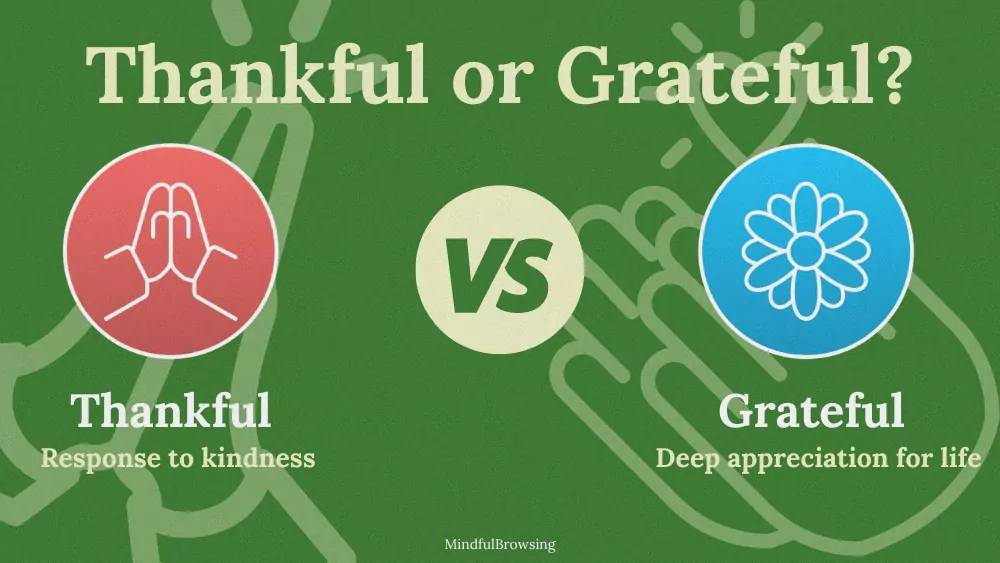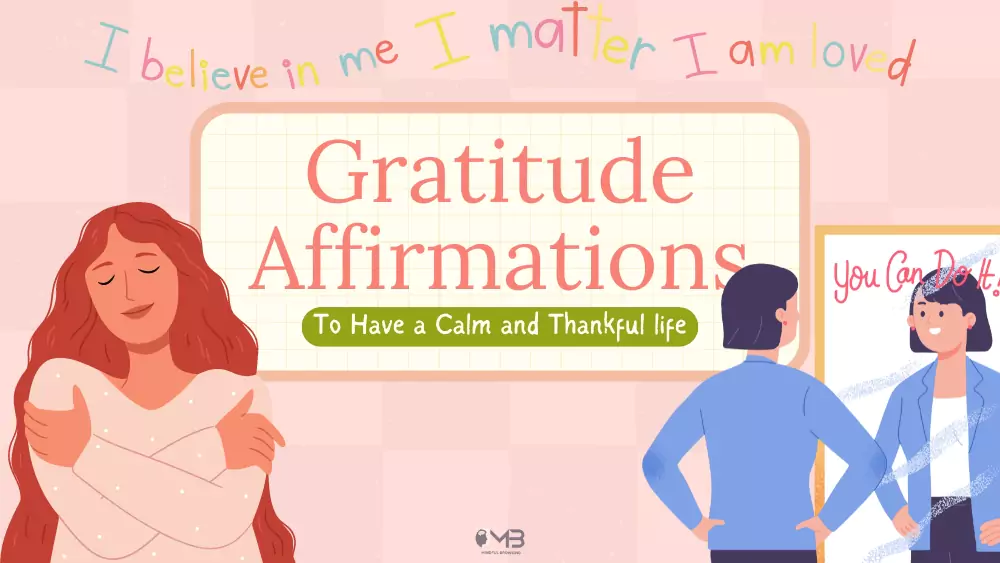
It was one evening in bed when this weird thought just came to my head: ‘What’s the genuine difference between being thankful vs. grateful? ‘ And, well, it just kept impressing my brain and nudged me to dig deeper. Although much has been said on the domain of positive emotions, the words ‘thankful’ and ‘grateful’ are mostly used as complements to each other, though with a subtle difference reflecting quite serious consequences for our relationships, resilience, and well-being. Have you ever thought about what really makes each different, and how each uniquely contributes to our emotional experience?
That question set me off on the curious path of teasing apart some of the differences between these two seemingly interchangeable emotions, which eventually dug up distinct flavors of gratitude and thankfulness. Understanding such words will also make us understand both concepts a little better and create more emotional improvement. Let’s dive in and see what thankful and grateful mean, and when we should use one over the other, personally and socially.
Thankful verses Grateful: What’s the Difference?
The words grateful and thankful represent related yet different feelings that meet each other so many times in life, as spoken. Though similar, they are special in their ways; they vary in some characteristics.
Let us have a look at their definitions to highlight the difference between thankful vs grateful:
- Thankful: A more general and basic emotion expressed for a particular occasion or situation, often appreciating good fortune or convenience. A sense of implied relief or pleasure attaches here, as in “I’m thankful for this beautiful weather.”
- Grateful: A potent, deep feeling and sincere sentiment that affirms something positive has reached or impacted the person, therefore, could include appreciation for someone’s action or existence. This is reflected by the repetition of daily affirmations of gratitude, like being thankful for those people who helped us along our journey. For example when you say, “I am grateful for my caring and supportive partner.”
The more we learn to understand and appreciate the differences that exist between grateful and thankful. The better position we place ourselves in, with even more sincerity and depth to the touching sentiments expressed.
The Spiritual Differences Between Thankfulness and Gratefulness

On the spiritual level, a difference between thankfulness and gratefulness also exists. Whereas one recognizes blessings, the other aligns with the presence of the divine within ourselves. Knowing the difference between thankfulness and gratefulness can foster a change in spiritual connection and self-realization.
Thankfulness: Appreciating the Present Moment
Thankfulness can be about appreciation regarding the present situation. Recognizing the value of some gesture or event, and relishing that moment.
It is a response to something positive that has happened to us or something someone has done for us, such as being thankful when a good friend buys coffee for us, or when a colleague helps us with a task.
It is an emotion that occurs during everyday interactions. Keeps us in the present moment and in actual acknowledgment and appreciation of people and instances that make our lives more pleasant.
For example, saying “thank you” because somebody is holding the door open or being thankful when a partner prepares dinner.
Gratefulness: Embracing Life’s Abundance
Gratefulness is that deep feeling inside when knowing life is full of blessings, even during those challenging moments. It is such a mindset that focuses on the good. Lets one appreciate everything from a cup of coffee to major blessings like caring friends, a stable job, and enjoying simple delights in life.
As a spiritual practice, gratefulness calls us to consciously dwell on the positive, cultivate optimism, and be delighted by simple things. We can also plant deep gratitude in our minds by adding some gratitude questions or gratitude prompts like, “What are the simple pleasures I enjoy in life?
This attitude of gratitude, according to Psychology Today, is what occurs when we keep acknowledging and appreciating what good we do have in our lives. Instead of constantly desiring something else.
In directing and deepening our gratefulness through these gratitude journals, meditations, and daily reflections. We are granted the opportunity for a changed relationship with ourselves and the world around us.
How to be Thankful and Grateful?

As we have touched on the differences between thankful vs. grateful, let’s outline a few thoughts on how one can put those lessons into practice in everyday living.
1. Expressing Thankfulness
Being thankful for specific acts of kindness is very powerful. While, of course, one must thank their friend for the coffee. Reflecting on the big picture of friendship and support lifts the mood.
2. The Practice of Gratitude
To practice gratitude, you may want to try one or more of the following activities:
- Make a gratitude list, to cherish happy moments in your life.
- Practice gratitude activities including gratitude journals, or gratitude apps.
- Read quotes on mindfulness that help foster a grateful attitude.
- Jot down gratitude notes and place them in a gratitude jar to reflect on blessings.
- Identify activities that spark passion and deepen your appreciation for life.
All these instilled into your life will nurture an appreciating attitude that yields richer emotional rewards and deeper connections with others.
Conclusion
Gratitude and thankfulness are both important in our emotional lives. Interconnected, even used synonymously in some ways. The ability to distinguish between them offers a deeper level of comprehension in our emotional responses. The establishment of this ‘tree of gratitude,’ with its roots of reflection, branches of appreciation, and leaves of expression, makes thankfulness a practice that nurtures not only our relationships but also our happiness.






